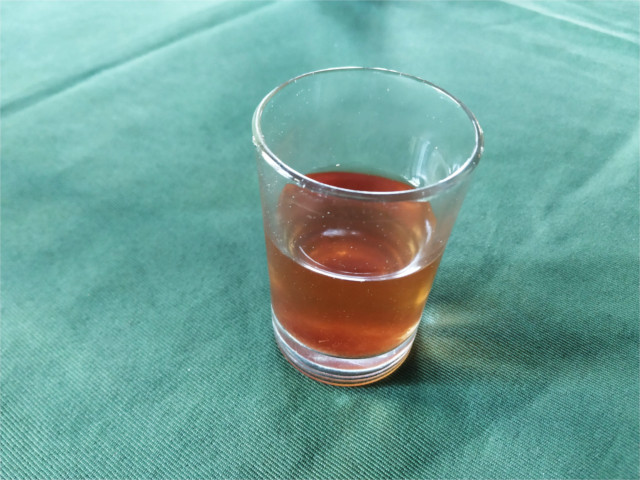The western Himalayas have the wonderful drink called Buransh. In Kumaon this would translate to Rhododendron. Interestingly, the plant has different names in other regions of the western Himalayas (for example, in Himachal the local name for the plant is Bras), whereas the name of the drink is the same. This probably means that the origin of the drink is Kumaoni, and it has recently spread across the mountains. The Family usually buys bottled Buransh from village cooperatives when we travel in the mountains.
The recipe is terribly simple. Take a kilo of the petals. Carefully separate them from the rest of the flower; the nectar is poisonous, and causes your blood pressure to fall, sending you into shock. The locals throw away the stigma and anthers too, and wash the petals thoroughly. So I assume that the pollen is also dangerous. Perhaps it is best not to make it at home until you learn from a Kumaoni family what to do. When I was trying to figure out this recipe, I was reminded of certain mushrooms you see in markets in Finland and Sweden. The vendors refuse to sell it to people who speak English. This is not xenophobia, but a safety measure. The mushrooms are poisonous unless you know exactly how to cook them. Using Rhododendron in the kitchen is similar to cooking these mushrooms: if you know what to do it is safe, otherwise it can be very dangerous.
So, back to the recipe. Take a kilo of the petals. Clean them thoroughly. Put them in about two liters of water. Bring this to a boil, and leave it simmering for about thirty minutes. Strain through a fine mesh, crushing the pulp to extract the flavour. Mix sugar to taste in the warm water. About three quarters of a kilo of sugar is usually needed for every kilo of petals. The juice is ready. If you preserve this in a fridge it might last two to three days. The shelf life can be extended by adding citric acid. If you add this, choose the amount judiciously, otherwise you can overwhelm the delicate flavour of the flower.
